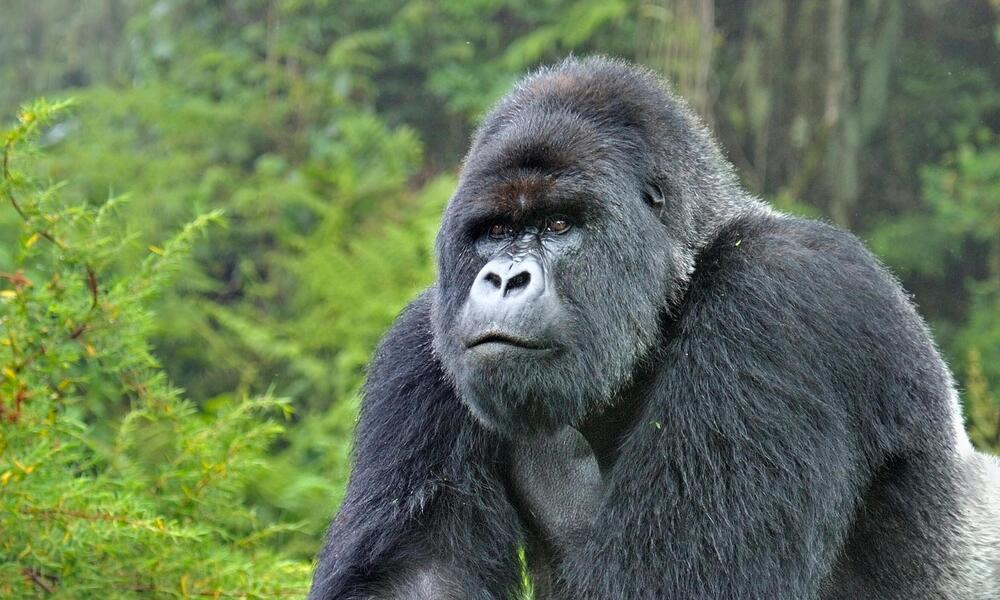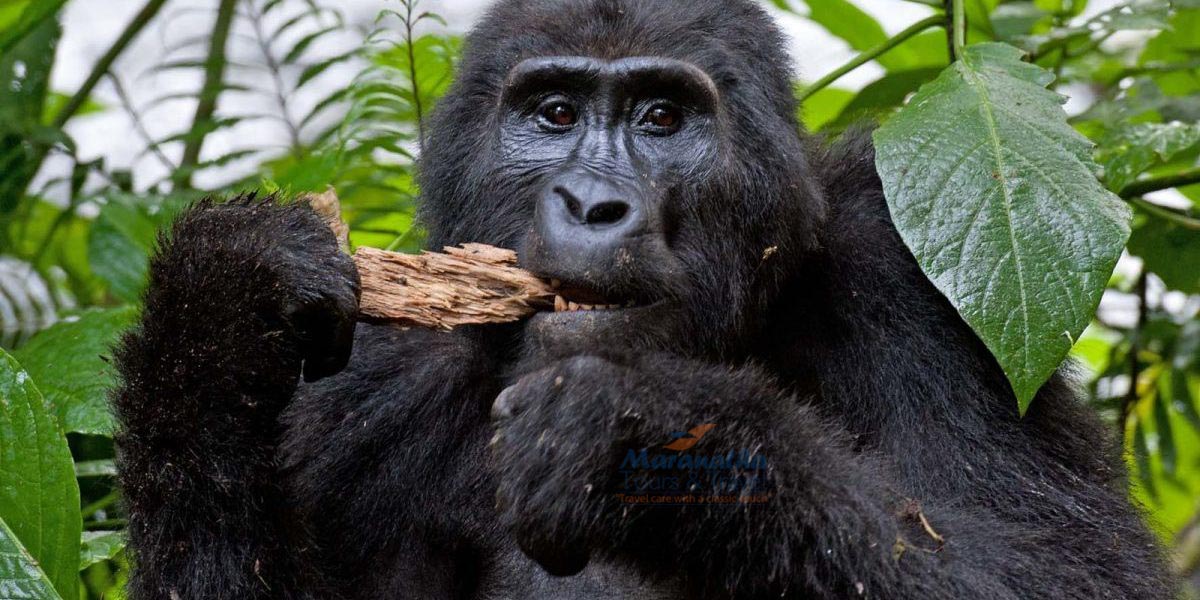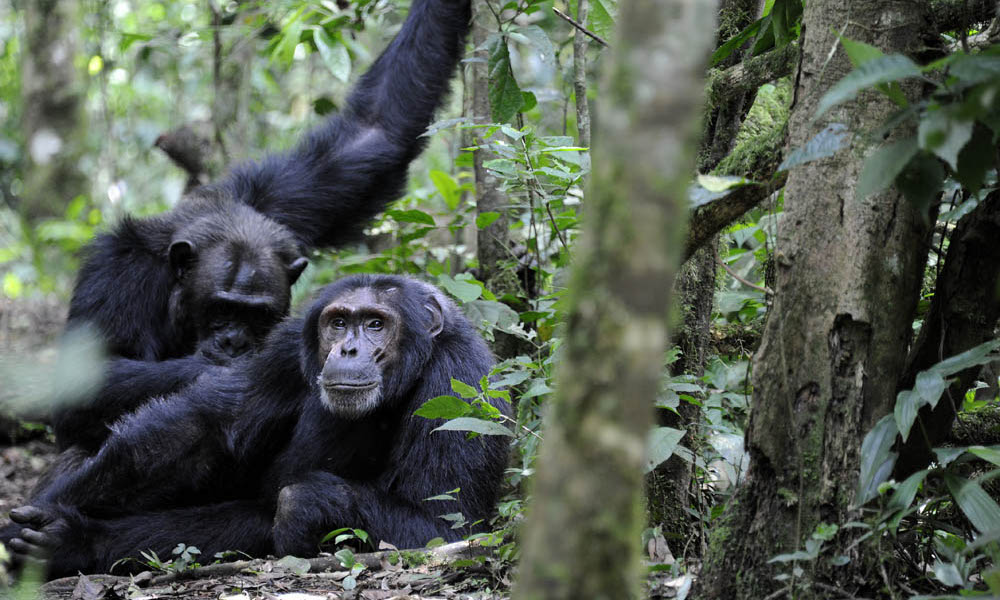Differences Between Gorillas and Chimpanzees
Gorillas and chimpanzees are two of the most popular and must-see primates in Africa and while they might look similar, there are a number of clear differences between them.
Primate lovers who have never tracked gorillas and chimpanzees before often get confused about the difference between these two creatures. Collectively, gorillas and Chimpanzees are Great Apes and close relatives to mankind in the animal kingdom. Would you like to identify these primates like a pro? Simply delve deep into the jungles of Africa to learn more about their interesting behavior, life, physical appearances, and other characteristics that are human-like. In this article, we shall provide information on those differences to help primate lovers understand these Great Apes better. For this reason, which primate is friendlier? The gorilla or chimpanzee? Which is more related to humans? Simply keep reading to discover these differences!

Mountain Gorilla (Gorilla beringei)
Both gorillas and chimpanzees belong to the Hominidae family, but the latter is in the Pan genus while the former is in the Gorilla genus.
Physical characteristics- size, weight, and appearance.
There are a number of physical differences between gorillas and chimpanzees, and these are in terms of size/height, weight, and facial appearances. Gorillas are the largest of the Great Apes with their weight reaching up to 240 kilograms while chimpanzees are smaller in size, reaching about 100 kilograms in weight. Gorillas also have more pronounced muscles and chests compared to chimpanzees.
Chimpanzee ears are large, more pronounced, and protrude from the sides of their heads while gorilla ears are smaller and extend towards the back of their heads. Gorilla faces are extremely black and chimpanzee faces are pink-like.

Gorilla Trekking
Distribution
Compared to chimpanzees, gorillas occupy a smaller home range and live in isolated populations within their total range. There is however no evidence of chimpanzees living in isolated populations within their home range while it is probable that in some places they still exist. In the jungles of Uganda where chimpanzees live, their distribution coincides with the isolated patches of their natural habitats.
Intelligence levels
It is now a known fact that chimpanzees are smaller than gorillas in size but they are surprisingly more intelligent. When to visit these two primate species, you will be amazed by chimpanzees’ use of tools in performing different tasks in their home ranges.
Natural habitats
Gorillas live and are confined to the dense and humid tropical rainforests, where three of the four gorilla sub-species (the western lowland, eastern lowland, and Cross River gorillas) live in the lowland rainforests while the mountain gorillas occupy the mountainous rainforests. The mountain gorillas also live in the bamboo forest (especially within Rwanda’s Volcanoes National Park). Like gorillas, chimpanzees also occupy the humid rainforests and a certain population of them permanently live within the forest-savannah mosaic around the edges of rainforests. Therefore, gorillas and chimpanzees live in lowland and mountainous rainforests but the latter occupy savannah vegetation outside rainforests which is not the case with gorillas.
Diet and food habits
Gorillas and chimpanzees are both vegetarians, but the former mainly consume leaves, stems, bamboo shoots, tree barks, and flowers, while the latter are primarily fruit eaters. While you track chimpanzees in Kibale and Budongo Forests, you will learn that their diet mainly comprises fruits of specific tree species. However, both of these Great Apes exhibits marked adaptability to several foods in their natural habitats.
Locomotion
While both gorillas and Chimpanzees are quadrupedal, their unique dietary requirements determine the time they will spend on trees or on the ground. Gorillas are primarily terrestrial and climb trees with great caution, owing to their weight. Chimpanzees are interesting arbo-terrestrial because they are equally killed on the ground and in trees. It will interest you to know that they spend over 75% of their time on trees where they most of the time swing and jump from one tree branch to the other, which is not the case with gorillas. While on the ground, both gorillas and chimpanzees support and walk on their knuckles as well as their rear bodies being on the flat soles of their feet.

Chimpanzees trekking
Social organization
Another way that gorillas are different from chimpanzees is their social organization whereby gorilla troops are fairly permanent. Even when you track a particular gorilla group, again and again, you will notice that majority of their members stay together hence providing the temporal as well as spatial differences. This is different from the chimpanzee communities where new individuals join the community as others also leave or better still, the community is sometimes divided into two or more units which most cases move their separate ways without rejoining for several days, weeks, or months. Changes in community composition are common among chimpanzees, which is not the case with gorillas.
Social behavior
Vocalizations also bring significant differences between gorillas and Chimpanzees, whereby the former are usually quiet. Chimpanzees on the other hand are always noisy in their natural habitats.
Relation with other species
In terms of relations with other creatures especially humans, the gorillas are very shy and more aggressive than chimpanzees and are likely to charge and sometimes even attack physically (although rarely experienced). Chimpanzees on the other hand rarely charge at humans and are more playful.
